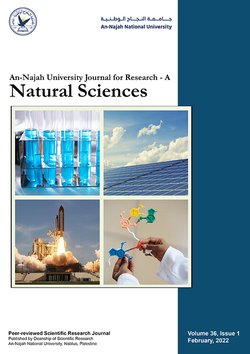Addressing the issue of microparticle size Pyrolysis Carbon Black(PCB) by adding to the concrete mixture
Authors:
Article info
2023-09-25
2024-01-02
2024-02-19
107 - 111
Keywords
- Pyrolysis
- pyrolyzed carbon black (PCB)
- Properties of Concrete
- Concrete
- sustainable waste management.
Abstract
MAX 250 words Tire waste is one of the world's major environmental solid waste problems. Used tires cannot be handled in landfills or burned because they create noxious vapors that are harmful. Therefore, a variety of methods for the treatment of used tires have been proposed. The most advantageous method for disposing of garbage is thought to be tire pyrolysis. By pyrolyzing waste tires, carbon black (PCB) is produced as a byproduct as well as gases, fuel oil, steel, and other materials. Another problem with solid waste is caused by PCB, which accounts for 30-35 weight percent of waste tire materials. In this experimental investigation, PCB inclusion in construction-grade concrete was attempted. The effect of black carbon particle size on concrete was examined in the current research. The compression test, which was performed in the testing, used six different PCB particle sizes. The results showed that the strength in the 28-day compression test could be organized in an increasing fashion, with the smallest particle size (75 m) yielding the highest compressive strength. The seven-day exam is also devoid of the usual arrangement.
Abdulfattah, O., & Abdallah, R. (2024). Addressing the issue of microparticle size Pyrolysis Carbon Black(PCB) by adding to the concrete mixture. An-Najah University Journal for Research - A (Natural Sciences), 38(2), 107–111. https://doi.org/10.35552/anujr.a.38.2.2205
[1]O. Abdulfattah and R. Abdallah, “Addressing the issue of microparticle size Pyrolysis Carbon Black(PCB) by adding to the concrete mixture,” An-Najah University Journal for Research - A (Natural Sciences), vol. 38, no. 2, pp. 107–111, Feb. 2024, doi: 10.35552/anujr.a.38.2.2205.
Abdulfattah, Osayd, and Ramez Abdallah. “Addressing the Issue of Microparticle Size Pyrolysis Carbon Black(PCB) by Adding to the Concrete Mixture.” An-Najah University Journal for Research - A (Natural Sciences), vol. 38, no. 2, Feb. 2024, pp. 107–11. Crossref, https://doi.org/10.35552/anujr.a.38.2.2205.
1.Abdulfattah O, Abdallah R. Addressing the issue of microparticle size Pyrolysis Carbon Black(PCB) by adding to the concrete mixture. An-Najah University Journal for Research - A (Natural Sciences) [Internet]. 2024 Feb;38(2):107–11. Available from: http://dx.doi.org/10.35552/anujr.a.38.2.2205
Abdulfattah, Osayd, and Ramez Abdallah. “Addressing the Issue of Microparticle Size Pyrolysis Carbon Black(PCB) by Adding to the Concrete Mixture.” An-Najah University Journal for Research - A (Natural Sciences) 38, no. 2 (February 2024): 107–11. https://doi.org/10.35552/anujr.a.38.2.2205.
Addressing the issue of microparticle size Pyrolysis Carbon Black(PCB) by adding to the concrete mixture
المؤلفون:
معلومات المقال
2023-09-25
2024-01-02
2024-02-19
107 - 111
الكلمات الإفتتاحية
- Pyrolysis
- pyrolyzed carbon black (PCB)
- Properties of Concrete
- Concrete
- sustainable waste management.
الملخص
MAX 250 words Tire waste is one of the world's major environmental solid waste problems. Used tires cannot be handled in landfills or burned because they create noxious vapors that are harmful. Therefore, a variety of methods for the treatment of used tires have been proposed. The most advantageous method for disposing of garbage is thought to be tire pyrolysis. By pyrolyzing waste tires, carbon black (PCB) is produced as a byproduct as well as gases, fuel oil, steel, and other materials. Another problem with solid waste is caused by PCB, which accounts for 30-35 weight percent of waste tire materials. In this experimental investigation, PCB inclusion in construction-grade concrete was attempted. The effect of black carbon particle size on concrete was examined in the current research. The compression test, which was performed in the testing, used six different PCB particle sizes. The results showed that the strength in the 28-day compression test could be organized in an increasing fashion, with the smallest particle size (75 m) yielding the highest compressive strength. The seven-day exam is also devoid of the usual arrangement.
Abdulfattah, O., & Abdallah, R. (2024). Addressing the issue of microparticle size Pyrolysis Carbon Black(PCB) by adding to the concrete mixture. An-Najah University Journal for Research - A (Natural Sciences), 38(2), 107–111. https://doi.org/10.35552/anujr.a.38.2.2205
[1]O. Abdulfattah and R. Abdallah, “Addressing the issue of microparticle size Pyrolysis Carbon Black(PCB) by adding to the concrete mixture,” An-Najah University Journal for Research - A (Natural Sciences), vol. 38, no. 2, pp. 107–111, Feb. 2024, doi: 10.35552/anujr.a.38.2.2205.
Abdulfattah, Osayd, and Ramez Abdallah. “Addressing the Issue of Microparticle Size Pyrolysis Carbon Black(PCB) by Adding to the Concrete Mixture.” An-Najah University Journal for Research - A (Natural Sciences), vol. 38, no. 2, Feb. 2024, pp. 107–11. Crossref, https://doi.org/10.35552/anujr.a.38.2.2205.
1.Abdulfattah O, Abdallah R. Addressing the issue of microparticle size Pyrolysis Carbon Black(PCB) by adding to the concrete mixture. An-Najah University Journal for Research - A (Natural Sciences) [Internet]. 2024 Feb;38(2):107–11. Available from: http://dx.doi.org/10.35552/anujr.a.38.2.2205
Abdulfattah, Osayd, and Ramez Abdallah. “Addressing the Issue of Microparticle Size Pyrolysis Carbon Black(PCB) by Adding to the Concrete Mixture.” An-Najah University Journal for Research - A (Natural Sciences) 38, no. 2 (February 2024): 107–11. https://doi.org/10.35552/anujr.a.38.2.2205.

Since 2019
Cite Score (Scopus): 0.8
Time to First Decision: 5 Days
Submission to Acceptance: 90 Days
Acceptance to Publication: 14 Days
Acceptance Rate: 22%
Call for Papers:
Sustainable Materials and Chemistry for Energy and Environmental Applications
Why should you
Publish With Us?
An-Najah National University
Nablus, Palestine
Nablus, Palestine
- P.O. Box
- 7, 707
- Fax
- (970)(9)2345982
- Tel.
- (970)(9)2345560
- (970)(9)2345113/5/6/7-Ext. 2628
- [email protected]
- EIC
- Prof. Waleed Sweileh
An-Najah University Journal for Research - A (Natural Sciences) by An-Najah University, Nablus, Palestine is licensed under CC BY-NC 4.0

